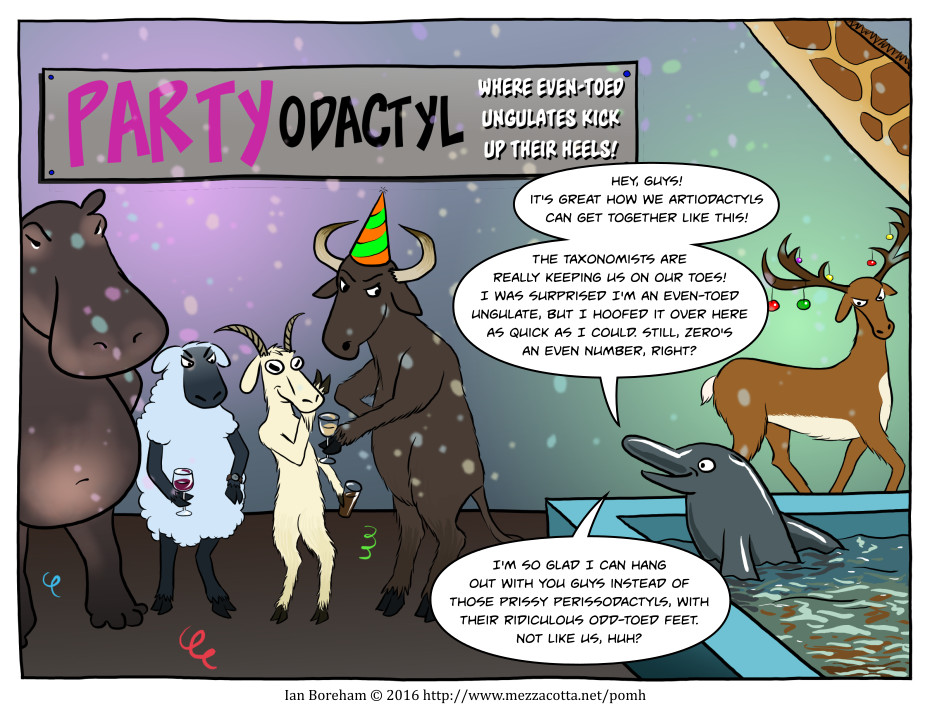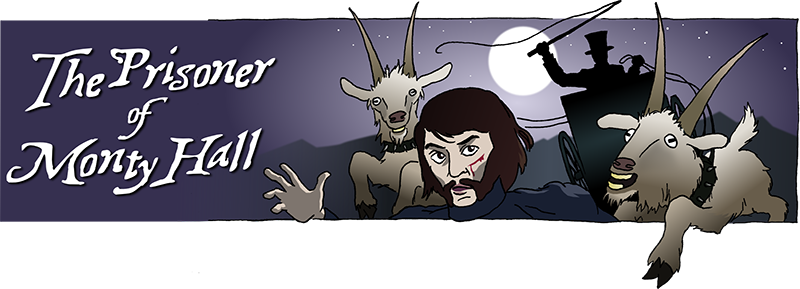» About » Archive » Search » Forum » RSS Feed Updates Wednesdays
No. 96: Even toes good! Odd toes bad!
First | Previous | 2016-11-23 | Next | Latest

First | Previous | 2016-11-23 | Next | Latest
Permanent URL: https://mezzacotta.net/pomh/?comic=96
Strip by: Ian Boreham
{A party whose guests are all animals, including a hippopotamus, a sheep, a goat, a bull, a stag, and a giraffe, who are standing around chatting and drinking, and wearing party attire. There is also a dolphin in a pool, talking to the gathered land animals, who are all looking annoyed at the dolphin.}
banner on wall: PARTYodactyl: Where even-toed ungulates kick up their heels!
Dolphin: Hey, guys! it's great how we artiodactyls can get together like this!
Dolphin: The taxonomists are really keeping us on our toes! I was surprised I'm an even-toed ungulate, but I hoofed it over here as quick as I could. Still, zero's an even number, right?
Dolphin: I'm so glad I can hang out with you guys instead of those prissy perissodactyls, with their ridiculous odd-toed feet. Not like us, huh?
The author writes:
Weirdly, cetaceans (dolphins and whales) are ungulates. Specifically, cetaceans and hippos form a clade called "whippomorphs" ("whippo" = "whale" + "hippo"; who said taxonomists aren't cool guys and gals?). This means that much to her chagrin, the hippo's closest relative at the party is actually the annoying loser dolphin. Ungulates are a group of animals that evolved to walk on some of their toes, which often take the form of hooves, and they are mostly herbivores. They are divided into the artiodactyls (even-toed, like the animals shown here), and perissodactyls (odd-toed, like horses and rhinoceroses). Many of them have additional, smaller toes that are not usually used in bearing their weight. Cetaceans have lost their toes altogether. Regarding the shape of an ungulate's leg, the backward-bending "knee" in the hind leg of a horse or deer is actually its ankle, and the joint corresponding to our knee is up closer to the body, so their body plan is more similar to ours than it might at first appear. A hoof is largely formed of an overgrown toenail. Cetaceans have lost their hind legs entirely, and they have a few disconnected bones that are remnants of a pelvis. The tail flukes are made of cartilage. Although the shape of a sealion's body bears some similarity to a dolphin's, the "tail flukes" of a sealion are actually its feet. Sealions and seals are related to bears, and their streamlined aquatic shape is a case of convergent evolution, rather than a sign of being closely related to cetaceans.
Drawn in Krita and Inkscape.
